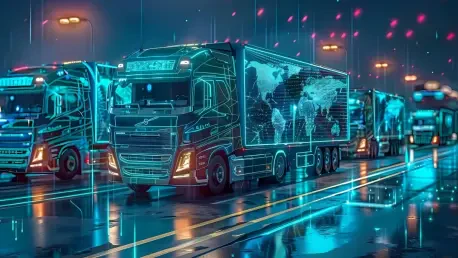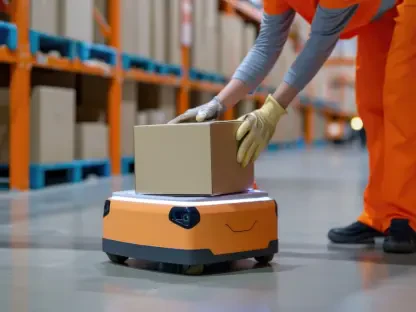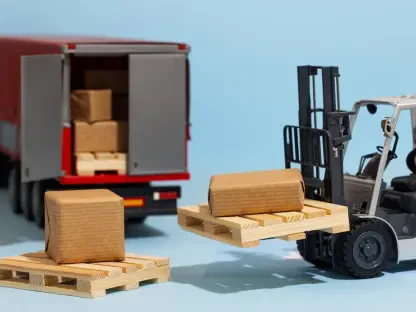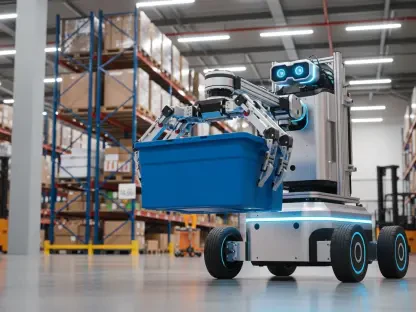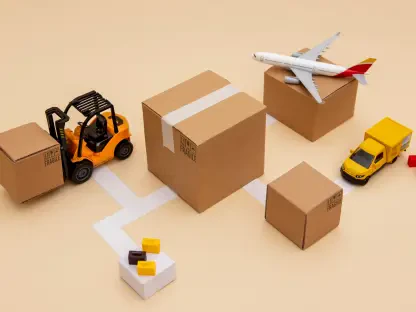Ease Logistics, a key player in the logistics arena, is currently testing cutting-edge automated truck platooning technology on the busy Interstate 70. This initiative spans the crucial corridor from Columbus, Ohio, to Indianapolis, Indiana, signifying a bold leap toward modernizing freight transportation. The project, a collaboration with the Ohio and Indiana state departments of transportation, aims to rigorously examine these technological advancements against the Midwest’s challenging weather conditions. This endeavor is not just a regional trial but a potential precursor to a national overhaul of transportation systems.
Exploring the Technology
Understanding Truck Platooning
At the core of this initiative lies a sophisticated system known as truck platooning. This involves electronically tethering two trucks so that the lead vehicle dictates both speed and direction for the following one. Developed by Kratos Defense, this technology traces its origins to military applications, underscoring its robustness and precision. A driver is still positioned in each truck, ensuring immediate human intervention if necessary, illustrating the balance between innovation and safety. This transition from conventional driving methods represents a foundational change in logistics, progressively moving toward automated systems without compromising safety.
Truck platooning not only embodies technological prowess but also reflects an industry trend towards enhanced safety measures. By maintaining driver presence, the system ensures that an additional layer of security is in place. The 260 hours of specialized training for each driver highlights the meticulous preparation involved. While this safety-focused approach indicates that full automation hasn’t been fully embraced, it represents a significant move in that direction. The technology is still evolving, promising a future where automation plays a more dominant role in logistics and transportation, significantly enhancing operational efficiency.
Technological Benefits and Safety Measures
The technological advancement in truck platooning brings myriad benefits to the table. Chiefly among these is improved fuel efficiency, primarily due to reduced aerodynamic drag when vehicles closely coordinate speeds. This synchronization not only enhances road safety but also optimizes freight transportation efficiency. The temperatures fluctuate significantly in the Midwest, providing a rigorous testing ground to assess how the system handles varying conditions. Through these trials, valuable data is garnered, driving further refinements in platooning systems for statewide and potentially national deployment.
A pivotal feature of these automated truck systems is the use of purple lights while in operation, a portrayal of transparency and safety in autonomous driving. This simple yet effective indicator ensures awareness among law enforcement and the driving public of the vehicles’ specialized operational mode, addressing common concerns associated with autonomous systems. Such thoughtful integration helps to mitigate public and official apprehensions, paving the way for more extensive testing and eventual large-scale application of technology. The emphasis on synchronized operations and visible indicators marks a critical juncture in aligning technological advancement with public safety considerations.
Broader Implications for Logistics
Economic and Infrastructural Impact
The involvement of Ease Logistics in such pioneering projects showcases the logistics sector’s significant push towards innovation and adaptation. Supported by a grant from the Department of Transportation, this initiative highlights not only federal interest but also substantial investment in modernizing infrastructure. As automated truck platooning becomes a focal point in logistics evolution, it promises to transform current economic strategies and infrastructural plans. The government’s backing underlines a broader dialogue about the future of transportation, emphasizing the necessity for robust, forward-thinking approaches to evolving logistical needs.
With the evolving landscape of global logistics and infrastructural challenges, the pressure to innovate is immense. Automated truck platooning is emerging as a transformative force, potentially reshaping traditional freight systems into more agile, efficient networks. Such technological advancements drive economic discourse, urging policymakers and industry leaders to consider longer-term infrastructural investments. The ongoing trials also represent a proactive step toward meeting ecological and operational demands, aligning with broader goals of sustainable and efficient logistics practices. The project’s success could herald a new era in logistics, where automated systems are integral to daily operations.
From Concept to Real-World Testing
This venture transitions from theoretical assessments to tangible applications, marking a new chapter in truck platooning trials. Initially tested in rural sectors of Southwestern Ohio, the project strategically expanded to the diverse environments presented by the Midwestern I-70 corridor. Such a shift underscores the commitment to evaluate technological performance across varying environmental conditions. Testing in unpredictable Midwest climates serves to stress-test the technology before any widespread deployment. This methodical expansion ensures comprehensive data collection, facilitating more informed decisions concerning future platooning system deployments.
Employing a realistic testing approach, the project seeks to capture the full spectrum of real-world driving conditions, thereby enabling a robust analysis of technology efficacy. By moving beyond controlled settings, the trials pave the way for adapting and optimizing truck platooning for widespread commercial use. The data gathered will ascertain the system’s reliability, further refining strategies for future implementations. As Ease Logistics and associated departments pave the way in such groundbreaking trials, they set a precedent for potential adaptations and scaling on a national level, firmly embedding truck platooning in the future of logistics.
Navigating Competitive and Logistic Sensitivities
Maintaining Confidentiality and Building Partnerships
In an industry characterized by competitiveness, maintaining confidentiality regarding shipping partners is crucial, especially during such groundbreaking trials. While the open-road testing unfolds, there remains a strategic emphasis on protecting commercial interests. This delicate balance allows the exploration of innovative technologies without compromising sensitive logistics information. Furthermore, forming alliances across various sectors emerges as a key approach to bolstering innovation. Collaborative endeavors could lead to more extensive adoption of automated systems, cultivating a dynamic framework for future logistics frameworks. Building such partnerships could be instrumental in fostering a collaborative ecosystem throughout the transportation sector.
The nature of logistics often involves sensitive proprietary data; hence, the deliberate choice to maintain discretion underscores the project’s competitive nature. By doing so, Ease Logistics positions itself advantageously within the marketplace while also laying the groundwork for potential collaborative efforts. The protective approach serves to foster a spirit of innovation without intrusion, inviting diverse collaborations that can benefit all stakeholders. These strategic alliances offer opportunities for knowledge exchange and innovation, imbuing the logistics industry with a collective drive towards modernization and efficiency.
Balancing Caution with Innovation
Ease Logistics, a prominent entity in the logistics sector, is currently pioneering the use of advanced automated truck platooning technology along the bustling Interstate 70. This significant effort extends across the essential corridor linking Columbus, Ohio, to Indianapolis, Indiana, marking a significant step forward in the evolution of freight transportation. The project is a collaborative endeavor with the state departments of transportation in both Ohio and Indiana. This partnership aims to thoroughly test the robustness and efficiency of these technological innovations amidst the often-harsh weather conditions characteristic of the Midwest. This initiative is not solely a localized trial but also represents a possibility for broader national change in transportation infrastructure. The successful implementation of this technology could potentially transform how goods are transported across the United States, signaling a future where logistics are more efficient, sustainable, and responsive to environmental challenges.
